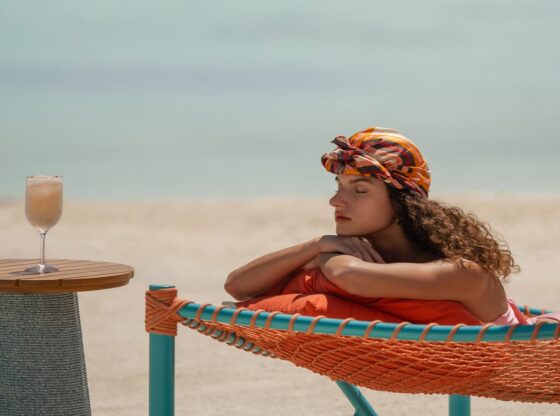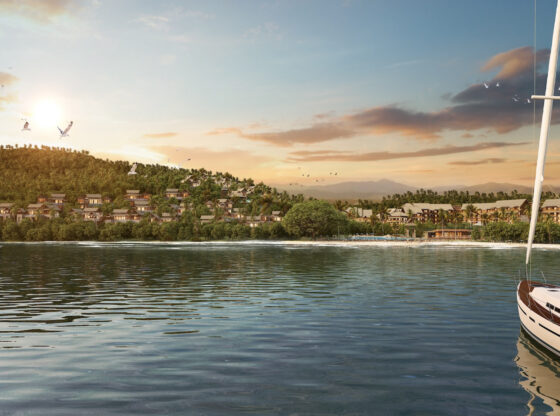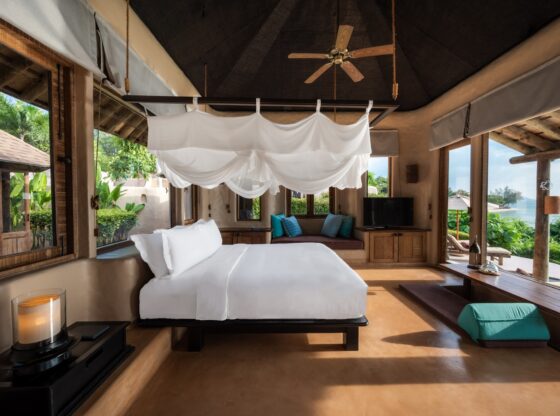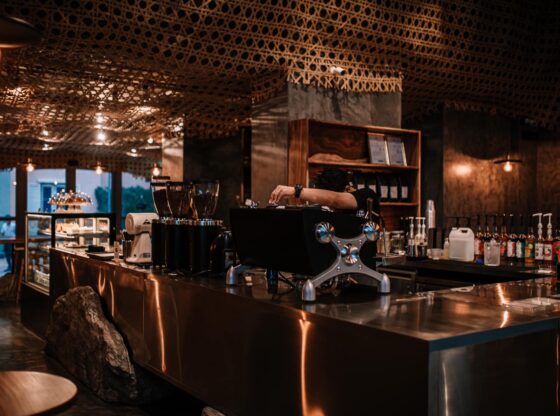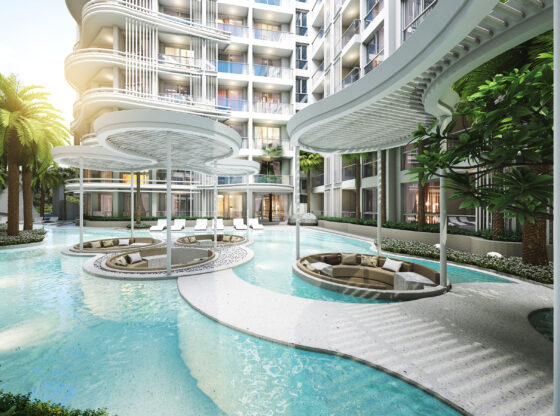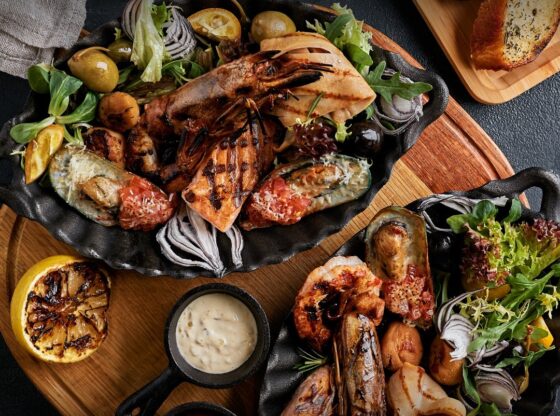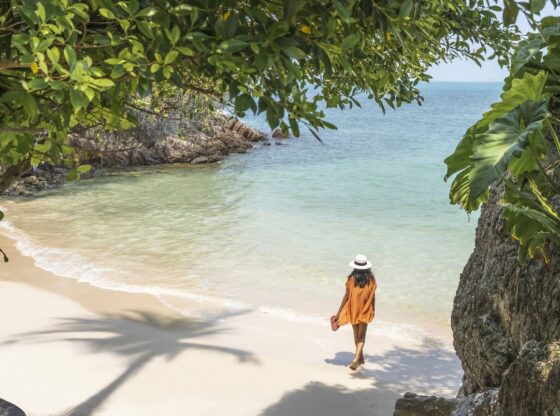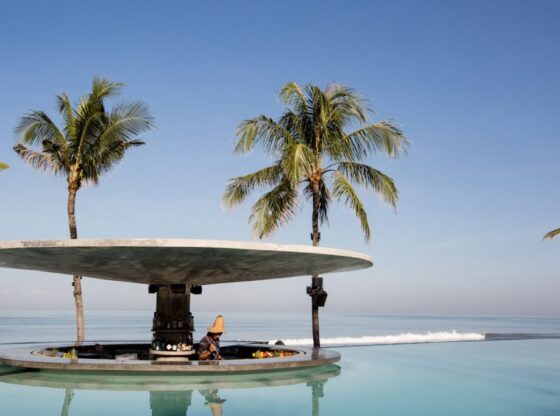![]()
THAILAND
The Siam, Bangkok
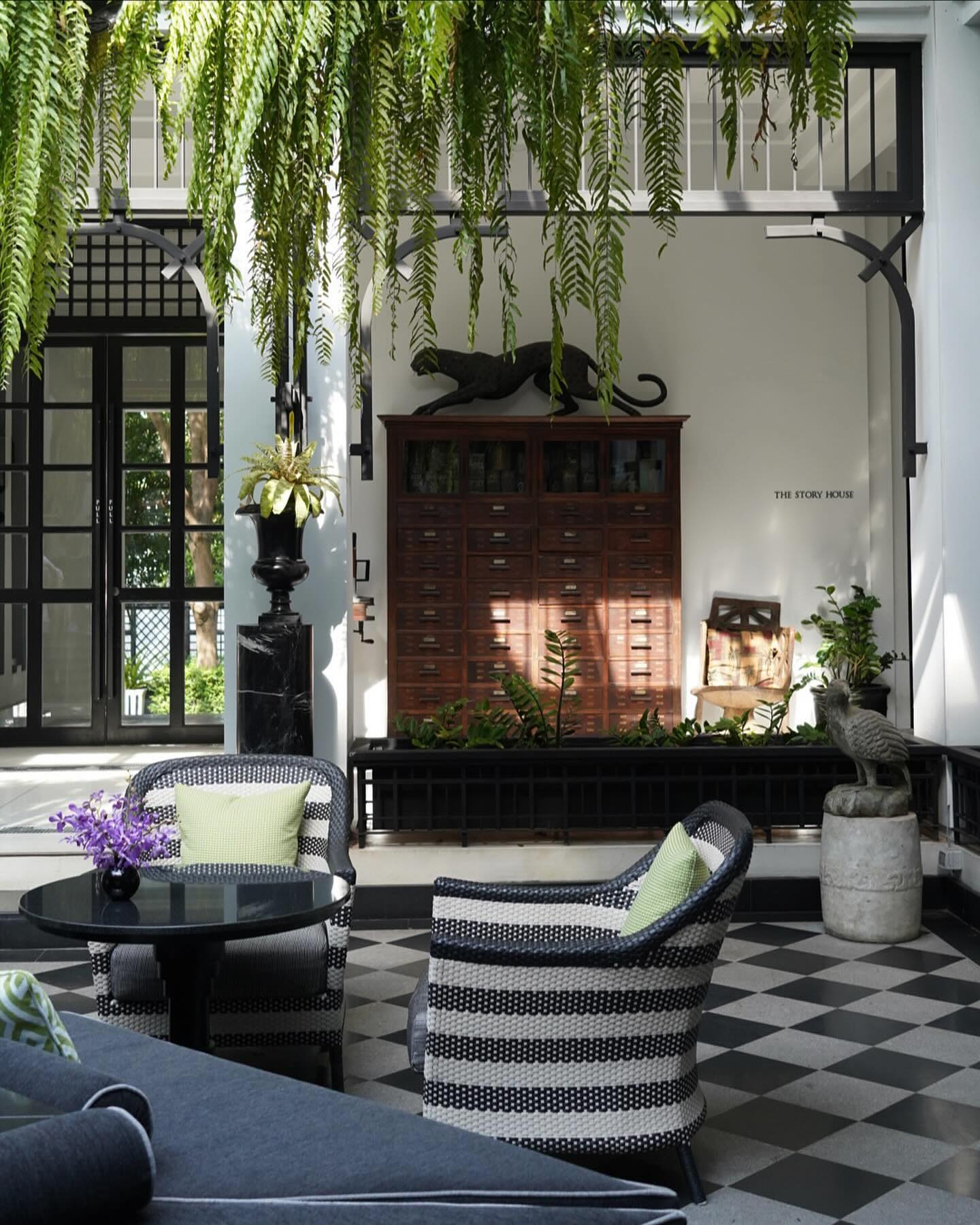
Compared with many of its rivals, this Bangkok stalwart doesn’t have a location that’s wildly convenient: the postcard sights need a boat transfer, and most top tables are more than a 30-minute taxi ride away. But for me, and the legions of other loyal fans of this monochrome masterpiece by hotel guru Bill Bensley, that’s the point. Pitched up on a lush riverside plot in the hushed Dusit district, The Siam feels like a portal to a bygone Bangkok. Even though it opened a decade ago, it’s easy to imagine it as a plush playground for the city’s erstwhile big guns, the mid-century movers and shakers whose heirlooms—vintage Pan Am posters, tattered travel trunks and chipped ceramics—adorn the marble-floored hallways. I’d be hard-pressed to point friends to a lovelier lunch spot than the hotel’s Thai restaurant, set between the timeworn pillars of three ancient teakwood houses, where butlers in dressy black sarongs deliver the kind of classic Thai hospitality—lilting “sawadee ka” greetings and tables set with fresh orchids—that’s becoming harder to find. None of which is to say that the hotel is stuffy—there’s a tattoo parlor in the spa. An ongoing refurb is keeping suites and private-pooled villas looking fresh. And with the opening of a Jim Thompson homeware boutique in the wooden house the illustrious silk magnate helped procure for its former owners, things have come full circle. The Thai capital’s five-star hotel scene gets plusher every year, but this timeless beauty remains in a league of its own.
Amanpuri, Phuket
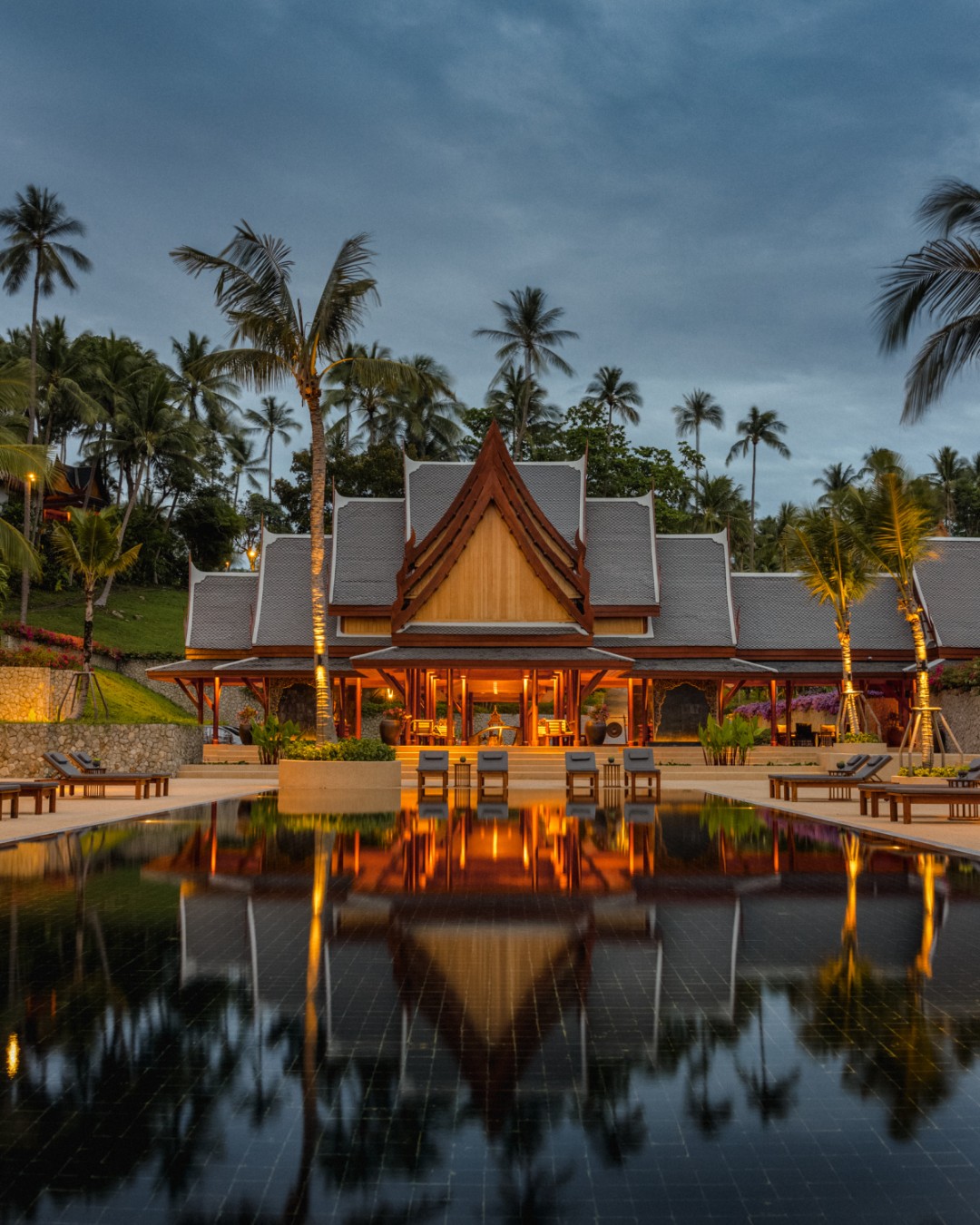
The original outpost of the globe-spanning Aman empire, this Phuket location was initially intended as a holiday home for Indonesian hotel guru Adrian Zecha. Eventually, he expanded the blueprint into a small boutique resort that opened in 1988. In the following decades, Amanpuri became a hush-hush haven for monarchs and supermodels, with yearly touch-ups and regular renovations (an extensive makeover finished last summer) constantly making it look as if it was brand-new. The hotel’s Thai temple-like pavilions have since been imitated by resorts all over Southeast Asia. But the ones surrounded by lush gardens and coconut palms here, accented with timeworn Buddhist antiques and fresh orchids, still feel like the real deal. During a recent project, the pavilions’ honey-hued interiors shed their low-slung ceilings to reveal the high-pitched teak wood beams that were hidden behind, while the rather poky old bathtubs in the mirror-clad bathrooms were replaced with newer models. The property frequently appears in Condé Nast Traveler’s Spa Guide, and for good reason: its Holistic Wellness Centre, which offers everything from crystal healing sessions to hi-tech IV infusions and medical check-ups, is one of Thailand’s very best. Despite the worldwide acclaim, the resort remains blissfully serene even during the high season, although scoring the best canvas-covered beach cabanas can turn into a game of musical chairs. Ask one of the hosts to try to reserve your favorite one.
ASIA
COMO Uma Punakha, Bhutan
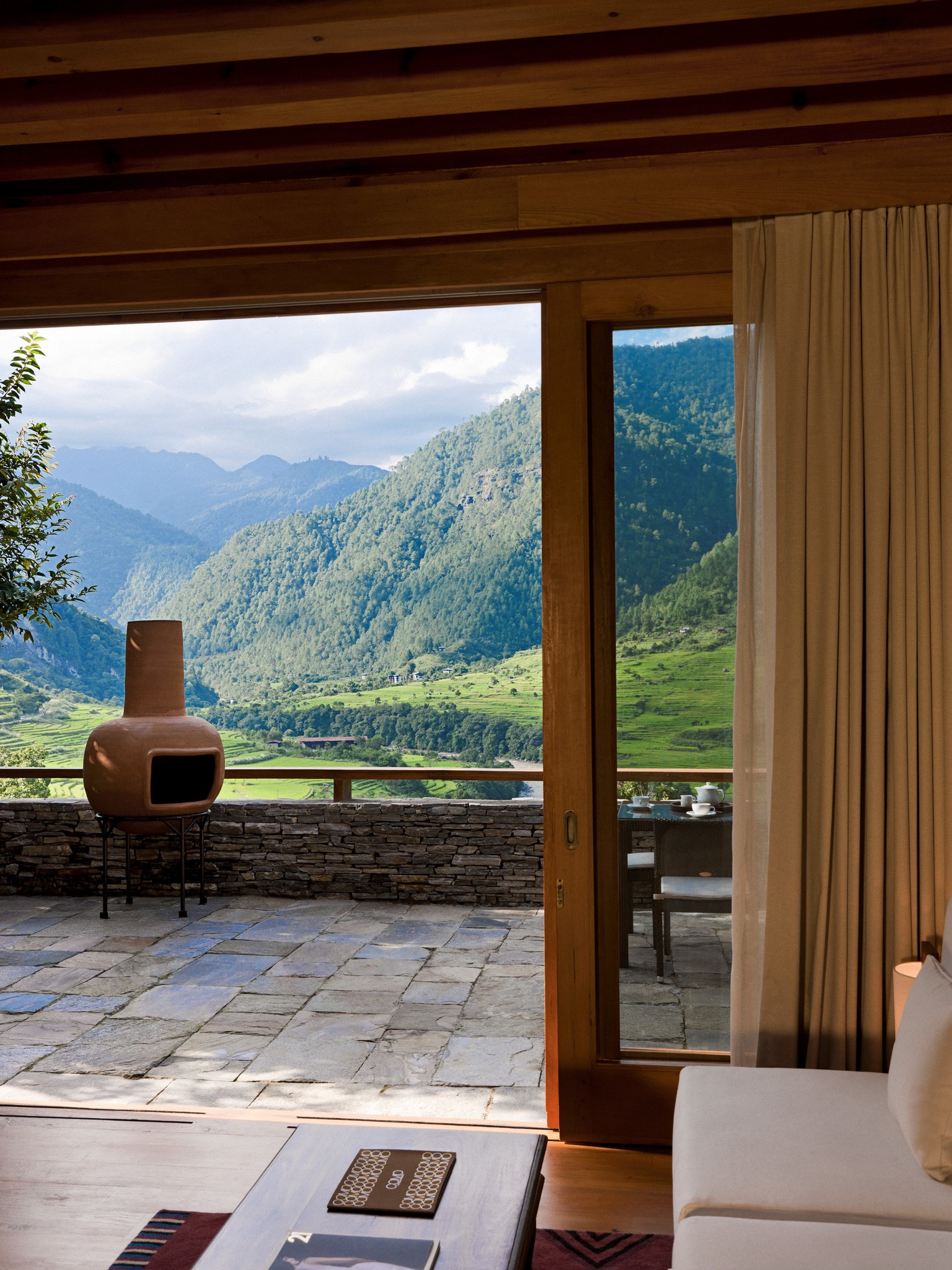
The COMO brand blends beautifully into this emerging, ecologically fragile Himalayan nation, with its overriding focus on wellness, sustainability, community and sense of place. The region of Punakha enjoys Bhutan’s balmiest climate, and it is to its Dzong fortress-monastery that the entire monk body migrates to escape the fierce chill of winter. The footprint of this rural hideaway is gentle: only 11 rooms. The low-slung structure, built like a local fortress, perches high on a river bluff, with double doors opening into a leafy courtyard. Each bedroom serves as its own mini retreat with yoga mats, local herbal teas and bath soaks. There are heart-stopping, floor-to-ceiling views high over Bhutan’s main river: the sedate, meandering Mo Chhu, flowing below terraced rice paddies and forests of pine. The decor is minimalist and sober, so as not to detract from the wild natural canvas in all its lush shades of green. The warmth comes from the texture of wood and stone, which is also the star of one of the signature treatments in the small spa: a bath, heated by fire-baked river stones that crack when they hit the water and release restorative minerals. The elemental theme continues in the restaurant, where a fire blazes in the wood-burning stove, acting as a cosy backdrop for warming dishes that headline local produce—from the buckwheat that goes into delicious pancakes and noodles to some of the nation’s many species of wild mushroom.
Soneva Jani, Maldives
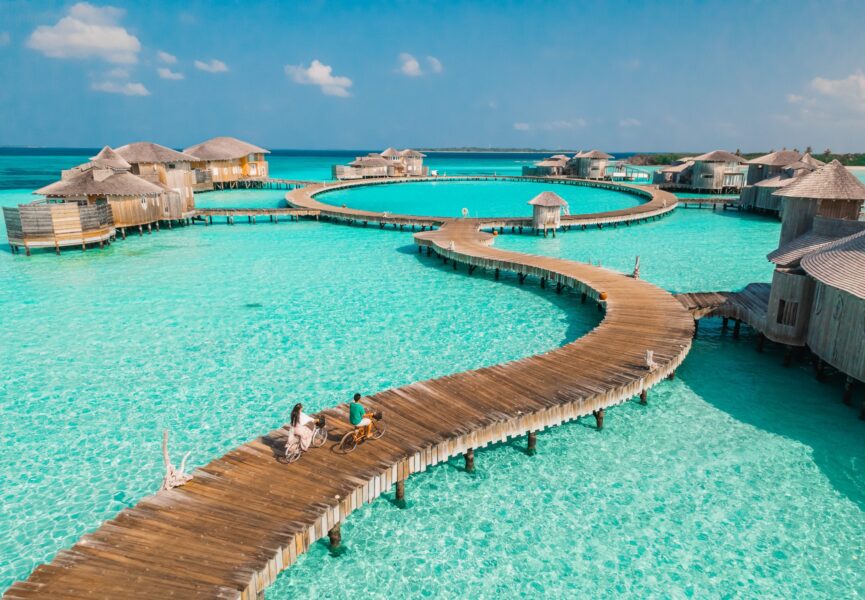
On the fringe of a lagoon in Noonu Atoll, blanketed in racing-green jungle and ringed with neon-white beach, Soneva Jani is the second Maldivian island home of the visionary brand. It’s an unreal world, where children and adults alike trail about the jungly interior on bikes, hang in hammocks on Robinson Crusoe beaches, throw themselves down slides, splash about on technicolor reefs and watch dolphins race through iridescent baby-blue waters. The overwater villas have glass-bottom floors and pool decks with corkscrew slides, and the fantastical Den, just a year and a half old, is the largest kids’ club in South Asia. But it’s not just about embracing your inner child. Adult treats include The Gathering, on the north side, an overwater barn of restaurants, a library and wine cellar. Eating is taken seriously—from a meat-free outpost by Bocuse d’Or-winning Swedish chef Mathias Dahlgren to the garden-set idyll So Local, as well a rotation of visiting chefs (2024’s includes Tom Aikens and Jane Alty, co-owner of London Thai street-food hero The Begging Bowl). A treehouse-like Island Spa has egg-shaped rooms linked by walkways floating towards a yoga shala. Soneva Soul is the brand’s new, more ambitious approach to health. This year, it has launched three-, seven- and 14-day wellness journeys around foundational health, sleep, detoxing and anti-aging, using its magic blend of naturopathy, Ayurveda and Traditional Chinese Medicine alongside high-tech treatments such as platelet-rich plasma therapy and ozone therapy. Feeling well is at Soneva’s core—way beyond ditching one’s shoes on arrival.
Song Saa, Cambodia
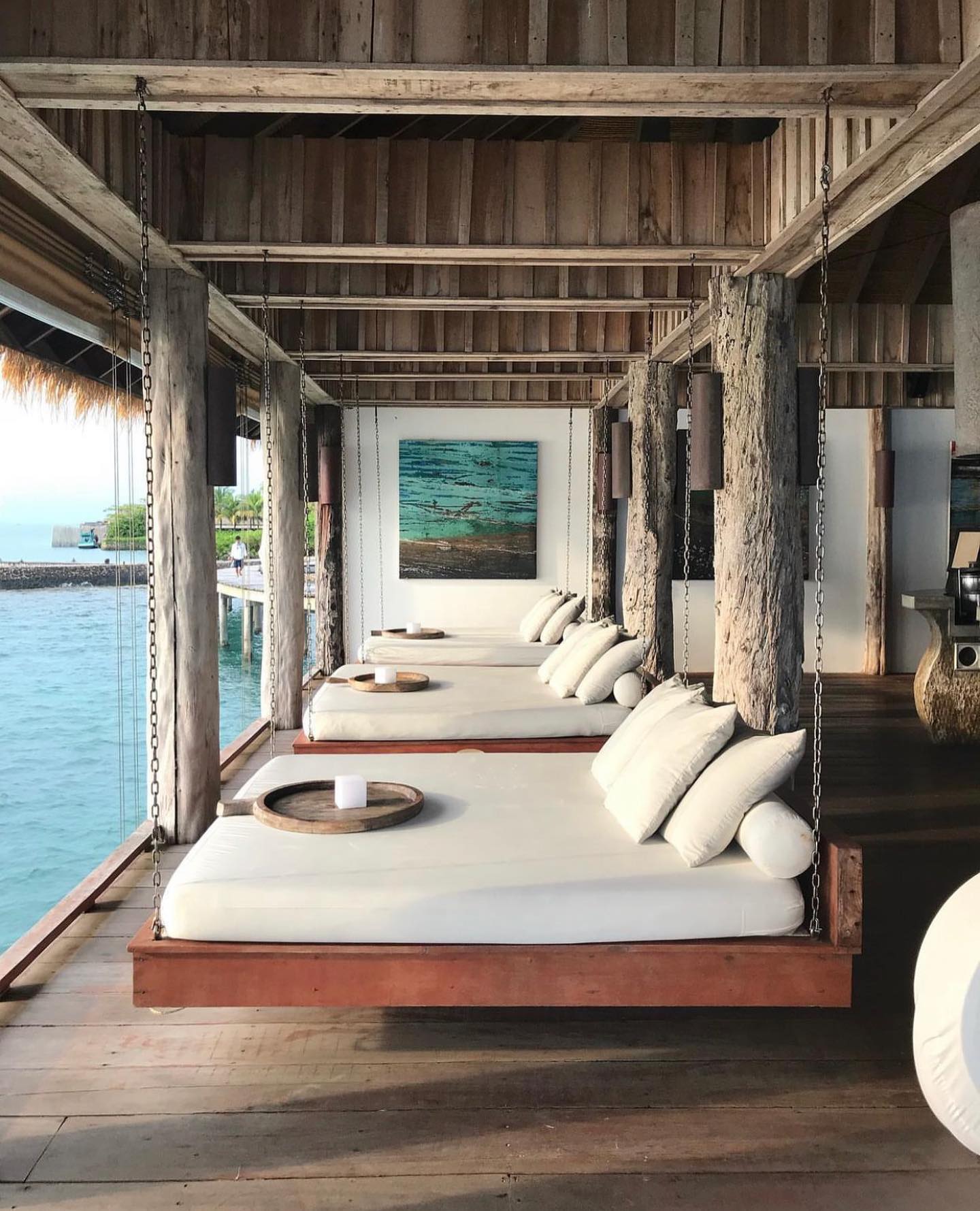
Like many of the world’s greatest private island retreats, southern Cambodia’s Song Saa has all the trimmings of a tropical fantasy: there are stilted wooden pathways snaking to overwater villas, and private-pooled hideaways burrowed in the thick jungle cloaking the island’s hilly spine. At breakfast, shoals of silvery fish shimmer like fine jewels in the glassy swell below my feet. And when the sun beams overhead, skinny palms leave shadowy patterns on the talcum-white sand hemming the snug, lounger-dotted bay. There’s only so much pool-lolling and beach-lazing I can handle, which can make castaway islands sometimes feel like a gilded cage. But Song Saa is different. A short boat-hop to nearby Koh Rong, the largest island in the eponymous archipelago, drops guests right into coastal Cambodian life for a fix of bustling fishing hamlets, coconut farms draped over low-slung hills and Buddhist temples with kaleidoscopic interiors. The Song Saa Foundation, which established the country’s first protected marine reserve in the coral-rich waters surrounding the island, is missioned to keep it that way: community outreach projects and a dedication to maintaining the environmental footprint at a minimum earned the island a B Corp certification in 2023. Cambodia’s coastal regions might be plagued by overdevelopment, but Song Saa’s blueprint for mindful hospitality delivers a glimmer of hope.
Hotel the Mitsui, Kyoto
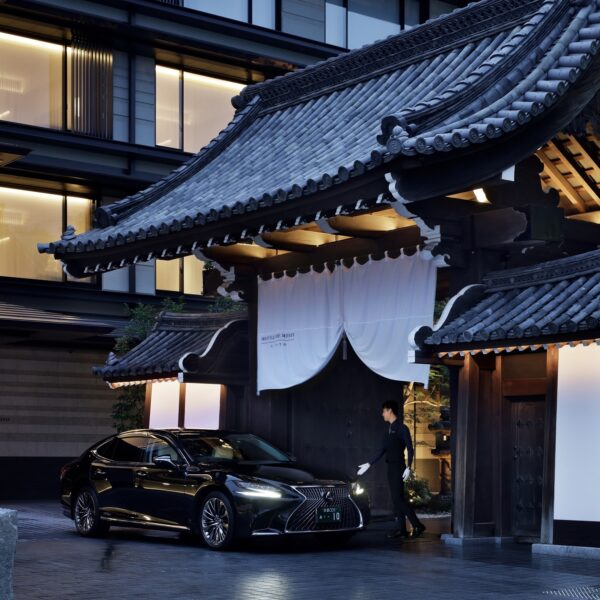
It’s a bold move to open a design-forward property in a city that has fully tied its identity to the past. Even bolder to build it on the exact site where the long-prominent Mitsui family had a residence from the late 1600s to the 1940s. But once you hear the storybook ending—how in 2015 the Mitsui corporation’s real estate arm bought back this beloved parcel of land—it makes sense. While the sleek André Fu–designed spaces break from Kyoto’s usual decor tropes, the past is everywhere. See, for instance, the 300-year-old wooden gate that once demarcated the original estate. There are subtle signifiers too: a long corridor with blond wood arches that echo the maze of torii gates at Kyoto’s famed Fushimi Inari shrine, a ceiling installation inspired by kimono fabric. But it’s the practical yet cosseting touches—the neatly folded pajama set that appears at turndown, the sprawling underground onsen—that will shape this next chapter of the Mitsui legacy.



